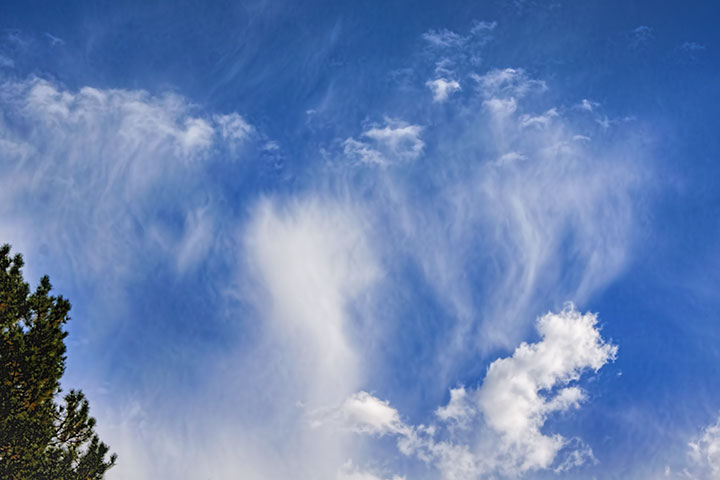You can stick your finger into a glass of water, but not through a block of ice.
That pretty well explains what is going on in this morning’s picture of fallstreaks.
Water molecules are not as tightly bound together in the liquid as they are in the solid. This means that, at the same temperature, fewer water molecules will escape (evaporate) from an ice crystal than from a water drop.
Wry comment Over two centuries after it was shown to be nonsense, there are still teachers who ignorantly tell their students that clouds form because “cold air cannot hold as much water vapour as warm air.” This sad misrepresentation of reality is rejected by all modern physics. The issue is discussed on this site in an article called condensation. Alas, the air lacks such a holding power and air is actually irrelevant to the issue.
Imagine a small volume in which water drops and ice crystals are together surrounded by water vapour (It is humid). Yes, all three phases—vapour, liquid, solid—frequently coexist at temperatures below 0C. The vapour molecules will condense on drops and crystals at the same rate. But, it is much easier for the loosely bound molecules in the liquid to evaporate than it is for the tightly bound molecules in the solid. The result is that often there are more molecules arriving than leaving the ice, while there are more molecules leaving than arriving on the liquid: the crystals are growing; the droplets are shrinking.
In the picture, below, the tufts of whiter cloud in the upper portion of the picture are composed of water drops; the greyer streaks that hang below them are of ice crystals. The original water cloud was larger, but when some of the drops froze, they (now being ice) grew rapidly while the remaining water drops shrunk. The increasingly large crystals had a larger terminal velocity and fell below the original water cloud to produce these fallstreaks.
And all this happened for the same reason that it is harder to stick your finger into a block of ice than a bucket of water.


Very interesting, Alistair. You helped me to learn something new today!
thanks for that enlightening demonstration. but i have a related (or not?) question: water and ice have no intrinsic color, but normally reflect the surroundings in some complex way (the lake on a sunny day is blue). How come clouds are white against a blue sky? peter b
Peter, the issues you raise deserve a more thorough treatment than this response can possibly give. Maybe sometime I should take some pictures of water—the Lake, waterfall ice, snow, clouds—and make a few postings about them. However, at the risk of seeming glib, here are some points, each of which could be expanded into an essay: